-
Posts
12439 -
Joined
-
Last visited
-
Days Won
554
Content Type
Profiles
Forums
Events
Everything posted by Fiery
-
We haven't been able to get our hands on a GRID+ V2 yet. It should arrive next week though, so if we can solve the protocol issue, you can expect AIDA64 to support the device sometime in April.
-

Incomplete sensor readings on MSI X99A Godlike Gaming
Fiery replied to MiHi76's topic in Hardware monitoring
Thank you for the feedback. We've contacted MSI and they said your board doesn't support monitoring DDRVPP. -
We've checked what's available online, but it doesn't seem to be clear at all. Is it possible to handle the device in graphics mode, without writing the bitmap frames to the built-in SD card? Writing one frame per second (or more frequently) to the SD card would destroy the card in a few hours, so it's not feasable. If you're looking for a solution to handle the device in alphanumeric (character) mode, then please let me know what character resolution does your device support, what are the VT100 commands to use to move the cursor to a specific position, how to send text (if there's an escape code to display text), what's the command to clear the display, what's the command for contrast and brightness adjustment, and the bit rate (baud) to use with the additional COM port settings like parity, stop bits, etc. Or, in case there's a single document to explain all that, let me know where can we download it from. I couldn't find one for your specific device that would include programming details and protocol description. Thanks, Fiery
-
Thank you for the dump. Based on that, it uses an industry standard FT232 USB->Serial bridge chip. The "issue" is behind that chip, ie. how to talk to the LCD using serial commands passed to the FT232 chip. EDIT: I've found some material Let us check how it works, and I will report back in this topic.
-

Does lcd support Phillips 8" and 7" picture displays?
Fiery replied to philhu's topic in Hardware monitoring
I don't think they support passing bitmap data over the USB connection. But, in case you have information on the contrary, please let me know Regards, Fiery -

AIDA FPU Test on an old system
Fiery replied to c0olking's topic in Benchmarking, system performance
Of course not The AIDA64 System Stability Test, including all its sub-tests can stress any PCs released in the past 20 years, all the way back to the very first Pentium and AMD-K5 processors. -
It's a global SMART status. If it says "OK", all drives are fine. Otherwise, one or more drives report an imminent failure. The shared memory tags for power values say "pwr"; whereas the tags for voltages say "volt". If another software picks power readings up as voltages, it's due to a bug of that other software and not an issue about AIDA64
-

Incorrect Fan Sensors (Gigabyte Z170X-Gaming 7)
Fiery replied to fadsarmy's topic in Hardware monitoring
The mentioned new AIDA64 Extreme beta update is available for download at: http://www.aida64.com/downloads/latesta64xebeta After upgrading to this new version, make sure to restart Windows to finalize the upgrade. Let me know how it works -

Incorrect Fan Sensors (Gigabyte Z170X-Gaming 7)
Fiery replied to fadsarmy's topic in Hardware monitoring
Don't worry, we haven't The issue will be fixed in the next AIDA64 beta update due later today or worse case tomorrow -
No, it's not an AIDA64 bug. Intel DTS thermal solution (core temperature measurement) had major issues measuring low temperatures before the Intel Nehalem-class (Core i3/i5/i7) processors came out. The old Intel DTS, featured in your CPU, isn't capable of accurate temperature measurement below 50 Celsius. And it becomes even more inaccurate as the temperature gets closer to zero.
-

New LCD device support: Samsung SPF Digital Photo Frames
Fiery replied to Fiery's topic in Hardware monitoring
Try to lower the compression setting even more, and see if it helps. As for the LibUsb drivers: you can only install them when the SPF device is in mini-monitor mode. Try to remove the Samsung drivers, switch the device into mini-monitor mode, and try to install the LibUsb drivers. -

AIDA64 not updating battery charge rate on Xperia Z5 premium
Fiery replied to IA64's topic in Android Forum
Thank you! We'll fix the issue in the next AIDA64 app update. -
We've checked, and both issues are due to a platform bug of Android N Preview. It's the first and a very early preview, so it's normal to have such difficulties with it. I'm sure Google will fix both bugs soon. Regards, Fiery
-

AIDA64 not updating battery charge rate on Xperia Z5 premium
Fiery replied to IA64's topic in Android Forum
It is because for some reason Sony decided to remove that functionality from the Android 6.0 platform for your phone. It may be possible to get around this limitation, but in order to let us check it, we'd need a report of your current configuration. Please submit a report from the About page, and we'll check it out right away. -
I'm afraid heavy sandboxing enforced by both Windows Phone and iOS operating systems prevent apps from enumerating installed apps Regards, Fiery
-
We've never tried that combo. Please note that AIDA64 should work in a virtualized environment, but it is not supposed to provide low-level hardware readings that way. You can try disabling the RAID-related options in AIDA64 / main menu / File / Preferences / Stability, but I'm not sure if that would help...
-
Thank you for the feedback
-
Please don't mix PCH and PCH Diode temperatures. The first one comes from the onboard sensor chip, if it supports that readout. The latter comes from the PCH (chipset) itself, if it supports it. The latter doesn't need motherboard-specific support, so we cannot add it. Your PCH either supports the readout or not, and your BIOS either configures the PCH thermal controller properly or not.
-
Thank you for the feedback
-

Incomplete sensor readings on MSI X99A Godlike Gaming
Fiery replied to MiHi76's topic in Hardware monitoring
You can alter the sensor item labels in the OSD Panel, LCD, Desktop Gadget, and SensorPanel modules. You cannot currently alter them in the System Stability Test and on the Sensor page. We may implement that sometime in the future, but it's not currently on our roadmap. -

Snapdragon 800 list Krait400 CP, but no Adreno CPU info
Fiery replied to ODwyerPW's topic in Windows Phone Forum
The GPU model should be listed on the Display page. Have you checked it there?- 2 replies
-
- Lumia 1520
- SnapDragon 800
-
(and 2 more)
Tagged with:
-

fixed: Corsair H100 missing fans (Gigabyte 990FXA-UD7)
Fiery replied to LicSqualo's topic in Bug reports
Thank you for the feedback -

fixed: Corsair H100 missing fans (Gigabyte 990FXA-UD7)
Fiery replied to LicSqualo's topic in Bug reports
The mentioned new AIDA64 beta is available for download at: http://www.aida64.com/downloads/latesta64xebeta After upgrading to this new version, make sure to restart Windows to finalize the upgrade. Let me know how it works -
The mentioned new AIDA64 beta is available for download at: http://www.aida64.com/downloads/latesta64xebeta After upgrading to this new version, make sure to restart Windows to finalize the upgrade. Let me know how it works
-

Incomplete sensor readings on MSI X99A Godlike Gaming
Fiery replied to MiHi76's topic in Hardware monitoring
The mentioned new AIDA64 beta is available for download at: http://www.aida64.com/downloads/latesta64xebeta After upgrading to this new version, make sure to restart Windows to finalize the upgrade. Let me know how it works


